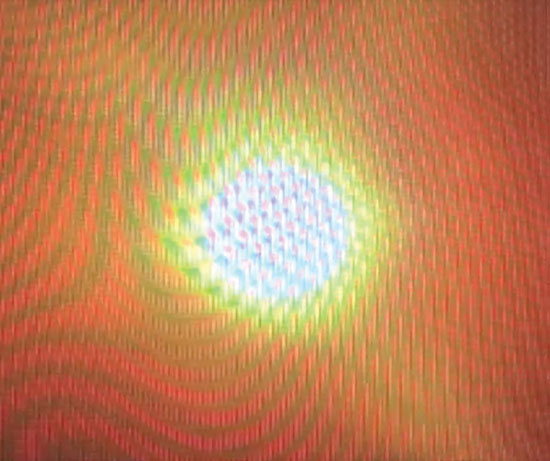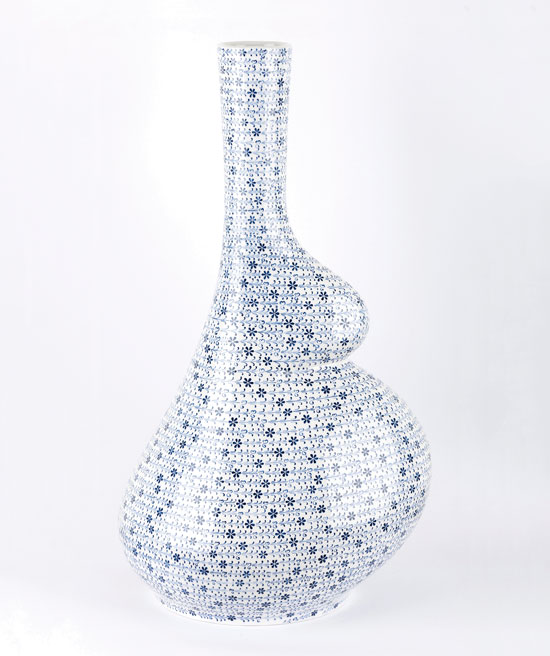RIDGEFIELD, C.T.–The Aldrich Contemporary Art Museum opens a museum-wide exhibition made up of six solo shows on May 3, 2015. Presented as a suite of shows beneath a single exhibition umbrella, “Circumstance” aims to reveal the ways inspiration and its influence manifest across object making, according to the museum. Each of the solo shows include commissioned works and present rarely-seen aspects of each artist's art making practices. Exhibiting artists in "Circumstance" are B. Wurtz, Virginia Poundstone, Nancy Shaver, Ruby Sky Stiler, Penelope Umbrico and Elif Uras.
Hamptons Art Hub has put together a two-part look at the six exhibiting artists, courtesy of information provided by The Aldrich Contemporary Art Museum. Click here to read information about the public Opening Reception on May 2, 2015 and information about the exhibition in general.
Part I provides an in-depth look at exhibitions by Virginia Poundstone, Nancy Shaver and Ruby Sky Stiler. Click here to read. Part II reveals insight into exhibitions by Penelope Umbrico, Elif Uras, and B. Wurtz. Continue scrolling to read Part II.
"Penelope Umbrico: Shallow Sun"
“Shallow Sun” presents new photo and video works by artist Penelope Umbrico that trace a ricocheting trajectory through photographic history. “Shallow Sun” will be presented inside and adjacent to The Aldrich’s camera obscura, a permanent architectural feature of the Museum building containing a device that formed the basis for all photographic technology.
The exhibition brings together a series of Umbrico’s works from 1989 to the present, reflecting on photography’s relationship to light and the complex changes that digital technology has brought to photographic image production. Sun Stream (camera obscura), the site-specific intervention into the Museum’s camera obscura, utilizes both analog and digital technology to reveal how we are at a point where light, traditionally the most central element of photography, has become disembodied from the natural world.
Exhibitions Director Richard Klein explains, “Shallow Sun” explores how the physicality of the image is disappearing in the digital age, and, in turn, how a digital image can now be reproduced infinitely to the point that it can be completely disassociated with the original reference.” Klein continues, “Umbrico has placed a ‘sunset’ on a monitor outside the camera obscura’s aperture. Although the morphing sun image projected inside the room is naturally produced by light coming through the camera’s lens, it is actually a digital artifact that has been ‘reprocessed’ through traditional photographic means.”
Other elements of Umbrico’s exhibition include an animated video montage of “light leaks” created from smartphone camera app filters, and a collection of over 50 cereal boxes with the surfaces blacked out, leaving visible only the silhouetted images of frozen splashes of milk that slyly reference Harold Edgerton’s iconic strobe photographs from the 1930s.
Photography can be considered both a technology and an art. If art is ultimately about asking questions, Umbrico’s process probes deeply into the nature of both photography and light in our present moment, brightly illuminating the shadows that technology has cast over everyday life.
"Penelope Umbrico: Shallow Sun" has been organized by Richard Klein, The Aldrich’s exhibitions director.
.

"Sun Screen (Camera Obscura)" (detail) by Penelope Umbrico, 2015. Courtesy of the artist and Mark Moore Gallery, Culver City, CA.
.
"Elif Uras: Nicaea"
Ceramic sculpture and tiles that juxapose modernity and tradition mark the site-specific installation of recent ceramic works by Elif Uras. "Nicaea” transforms a gallery into an interior courtyard featuring domestic objects and architectural motifs, including a ceramic fountain, a tiled niche, and a large-scale tile mural.
Uras produces her ceramic works onsite in Iznik, Turkey, (originally Nicaea, named after a nymph in Greek mythology), celebrated for its tile and ceramic production during the Ottoman Empire. Her imagery merges traditional nonfigurative Turkish art with Western art historical references, while highlighting shifting notions of gender and class within the context of the struggle between modernity and tradition.
Historically, Iznik reflected the patriarchy of the traditional society, with male artists and craftspeople producing work that adorned the walls of spaces mostly limited to men, such as their segregated quarters in mosques and baths. In Iznik today, women are very dominant in both the management and labor of ceramic production. In response, Uras’s sensuous vessels reflect this transformation of gender roles by placing the female figure center stage.
A functioning ceramic fountain sits in the center of the gallery, atop a carpet-like grid of painted tiles. Water and its constant flow, popular symbols of fertility and prosperity, reinforce the exhibition’s primordial focus. In a tiled wall niche, smaller vases are grouped on a long shelf, a nod to their inherent domesticity. On the outside wall, a painted tile mural inspired by a historic Iznik panel from the Topkapi Museum presents central figures that resemble Art Nouveau water nymphs.
Alongside Uras’s own work, the exhibition presents an original Iznik plate dating from the first half of the sixteenth century, on loan from the collection of The Metropolitan Museum of Art. The Iznik plate is positioned in dialogue with Uras’s plates and vessels, some of which incorporate its intricate spiral motif.
.

"Pregnant Haliç II" by Elif Uras, 2015. Courtesy of the artist and Galerist, Istanbul. Photo: Barış Özçetin.
.
"B. Wurtz: Four Collections"
“Four Collections” by artist B. Wurtz, transforms ordinary objects into collectible artworks. By doing so, the exhibition sets the stage for a compelling dialogue about high and decorative art, form and function, and the act of collecting.
For over 40 years, B. Wurtz has been transforming throwaway objects found in daily life—shoelaces, plastic bags, food containers, buttons, socks, hangers—into elegant, poetic compositions. These inexpensive and disposable materials transcend socio-economic class, passing through every home; but Wurtz has transformed them into artworks.
An ongoing body of work, which Wurtz has been producing since 1990, are his “pan paintings.” These wall pieces are made from ordinary aluminum food containers and roasting pans purchased at grocery or variety stores. He paints over the patterns and texts on the exterior of the pans with various colors of acrylic paint. At The Aldrich, Wurtz will cover three walls of the Leir Gallery, salon style, with more than 200 of his pan paintings and showcase selections from the collection of familiar domestic objects he’s acquired over the years.
Curator Amy-Smith Stewart said, “The surfaces of the pan paintings pulsate with colorful patterns of red, yellow, green, orange, and blue color hues. They appear like geometric abstractions, but their compositions are actually predetermined by an anonymous maker, as Wurtz accentuates the full range of their embossed designs. The simplicity of these works is what makes them so captivating, yet also so surprising, as one is left to wonder how something so plain spoken could be so wondrous.”
B. Wurtz spoke of the pans in contrast to the items in the three collections, gleaned from thrift stores and eBay, “The aluminum pans might be described as the working class and the other items as the aristocracy. I did enjoy the idea of putting all these things together and maybe messing with people’s heads. I will never deny the historical, political, and sociological inferences that can be taken from this motley group. But I also just love looking at these items together and putting all the rest of that aside. It is fun to just look at them in a visual way, to see what happens formally with the forms, the colors, the textures, etc. In my mind, I do see everything as rather equal.”
"B. Wurtz: Four Collections" has been organized by Aldrich curator Amy Smith-Stewart.
.
.
_______________________
BASIC FACTS: "Circumstance" is organized by museum exhibitions Director Richard Klein and Curator Amy Smith- Stewart. It opens May 3 and remains on view through October 25, 2015. The Aldrich Contemporary Art Museum is located at 258 Main Street, Ridgefield, CT 06877. www.aldrichart.org.
"At The Aldrich" Part I features art by Virginia Poundstone, Nancy Shaver and Ruby Sky Stiler. Click here to read.
"At The Aldrich" Part II features art by Penelope Umbrico, Elif Uras and B. Wurz. Click here to read.
_______________________
Copyright 2015 Hamptons Art Hub LLC. All rights reserved.

